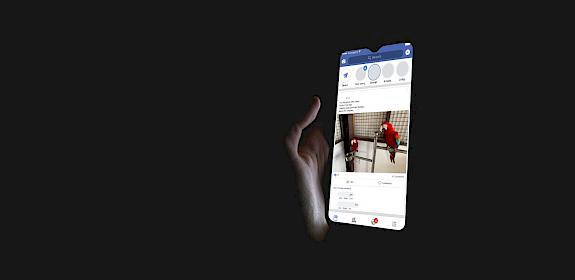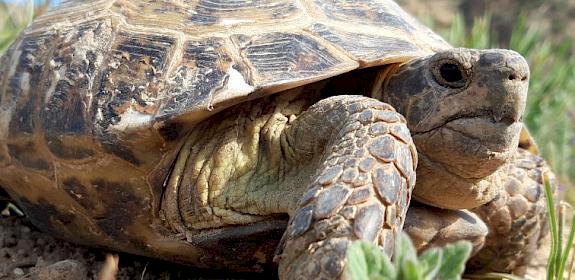New studies highlight critical issues for CITES implementation
Geneva, Switzerland, 18th August 2019—Ensuring trade is legal and sustainable lies at the heart of successful implementation of international wildlife trade regulation under the Convention on International Trade in Endangered Species of Wild Fauna and Flora (CITES), and two new studies from TRAFFIC draw attention to two critical issues.
The first deals with the issuing of legal acquisition findings (LAFs)—the mechanism used to prevent trade from being permitted in animals or plants that were not legally obtained.
To date, this is an issue that has received relatively little attention within CITES, yet according to the study: “A robust LAF is a powerful tool as it should mean that permits are not issued for international trade if the specimen or the breeding stock were obtained illegally.”
By contrast, the means by which countries can assess whether export of a species is sustainable, through the issuing of a non-detriment finding (NDF), has received far more attention within CITES, with a Resolution on the topic adopted by Parties and a range of guidance materials developed to support countries when making NDFs.
The current meeting of CITES will discuss a draft Resolution to strengthen LAFs (which includes non-binding guidance to Parties).
“A CITES Resolution to strengthen LAFs would reduce opportunities for international trade in illegally harvested and smuggled specimens or their offspring if adopted at CoP18 and fully implemented by Parties,” said TRAFFIC’s Willow Outhwaite who illustrated LAF issues through a case study on the captive breeding of Caribbean endemic reptiles.
The Caribbean region is highly biodiverse and has a large number of endemic reptile species, many of which are traded internationally—both legally and illegally. Around 6% of the 750 native reptiles are currently listed in CITES Appendix I or II, which regulates their international trade.
The study included a review of the CITES Trade Database and online adverts and found that most reported trade in Caribbean reptile CITES-listed species is between non-range States, and that some of this trade is likely in smuggled specimens or frequently their offspring which have subsequently been produced in captivity.
For some species, despite no trade from the wild reported in the CITES Trade Database, seizures indicate offtake from the wild continues. While known illegal offtake levels for some species may appear to be relatively low, any unregulated trade is of concern as many of these species are highly range-restricted and rare.
The document highlights the need for importing and (re-)exporting countries to ensure any international trade in Caribbean endemic reptiles is limited to specimens of legal origin. It also highlights the need for sustainable funding for the CITES review process to identify cases of false claims of captive-breeding.
In addition, the study highlights concerns regarding false claims of captive-breeding, a topic examined in depth in the second new report: all too often wild-caught species are falsely declared as being captive-bred, which lifts many of the restrictions on their trade. The issue is illustrated with a case study on the trade in Southeast Asian parrot species.
Parrots comprise almost 90% of all CITES listed live birds traded, more than 80% of them traded are reported to be from captive-bred sources. However, the study finds some of this trade has been carried out with the wrong CITES source codes—which relate to whether the specimens in question originated from the wild or captivity. This applies both to the case where source codes have been incorrectly applied and where the codes are deliberately misused—for example so that illegally wild-caught specimens can be “legally” exported as captive-bred, sometimes referred to as “laundering”.
Other examples of laundering include documented cases where fertilised parrot eggs, taken from the wild, have been smuggled to breeding centres in Europe where they are incubated and the hatchlings ringed and mis-declared as captive-bred.
In response to concerns surrounding the incorrect application and/or misuse of source codes, CITES adopted a Resolution in 2016 to establish a mechanism and selection process to review trade in animal specimens reported as produced in captivity.
The latest study reviews trade in three Southeast Asian parrot species (Palm Cockatoo Probosciger aterrimus, Yellow-crested Cockatoo Cacatua sulphurea and Eclectus Parrot Eclectus roratus) over which concerns about captive breeding have been raised in discussion with relevant experts. It identified potential concerns regarding the declared source of specimens in trade, particularly in relation to laundering, and proposes recommendations and actions that could identify further species at risk of misdeclaration and/or laundering.
The study found the largest number of Palm Cockatoos exported were from the Philippines (a non-range state), this despite the absence of a CITES registered breeding facility. Given the slow life history and available information indicating difficulties with captive breeding of this species, combined with the number of seizures that take place in the Philippines (of birds from range states), there is clearly the possibility that wild birds have been exported using incorrect source codes. Furthermore, online advertisements for the species on social media in Pakistan claim the birds are “untamed”, while images show birds clearly in poor condition—both strongly indicative of wild-sourced individuals.
Similar suspicious cases were found of Yellow-crested Cockatoos offered online on social media in Pakistan, while the Eclectus Parrot was also regularly offered for sale online in the Philippines, sometimes with comments about them being “not tamed” and having “no papers”.
Although relatively low numbers of Yellow-crested Cockatoos (a species endemic to Indonesia) are traded, the study found the potential for laundering/misuse of source codes through wild-caught birds being illegally transported from Indonesia and re-exported from the Philippines or Singapore and misdeclared as captive bred. A recent survey of parrot enthusiasts in Singapore suggested that wild caught Yellow-crested Cockatoos and Eclectus Parrots may be smuggled through Malaysia and Brunei Darussalam and available in pet shops in Singapore.
Only Singapore has a CITES registered breeding facility for Yellow-crested Cockatoos according to the CITES website, yet 11 other exporting Parties have reported exporting the species for commercial purposes, indicating a lack adherence to CITES requirements regarding exports of Appendix I specimens.
The study finds that despite successful captive breeding of Eclectus Parrots on a commercial scale, this does not appear to have eliminated the market for wild-caught birds, as evidenced by large-scale seizures. Possibly because it may be more profitable for breeding centres to supplement their captive-bred stock with wild caught individuals rather than obtaining stocks from other breeders.
“Accurate implementation of CITES measures are critical to ensure wildlife trade is carried out in a fully legal and sustainable manner: we hope Parties will take onboard the lessons from these two studies during their current deliberations,” said Outhwaite.
TRAFFIC is grateful to Restore Our Planet for its support through the Restore Species partnership for making this study possible.




